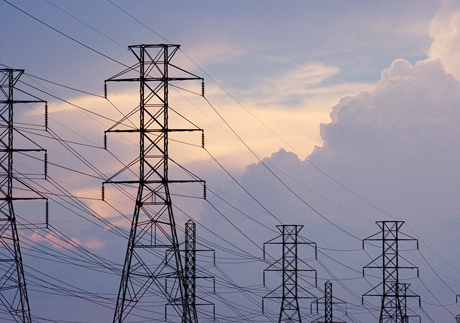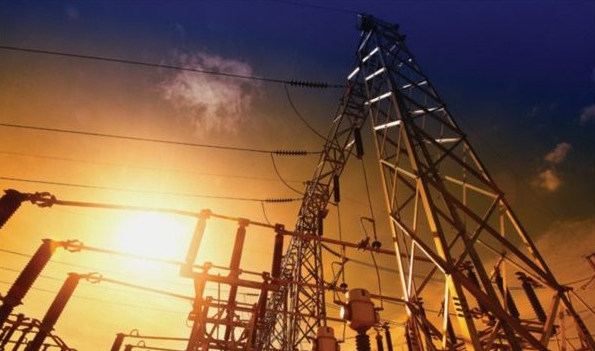خبریں
Converting 110V AC to 12V DC: A Guide
مصنف: زیڈ وائی جی پاور ماڈیول Time: 2023-5-16
Many electronic devices that we use in our daily lives require a direct current (DC) power supply to function. However, the power supply in our homes provides an alternating current (AC) voltage of 110V. Therefore, to power these devices, we need to convert the AC voltage to DC voltage. In this guide, we will discuss the steps needed to convert 110V AC to 12V DC.
Step 1: Determine the Load Requirements
Before you start the conversion process, you need to determine the load requirements of the device you want to power. This includes the voltage and current rating of the device. For example, if the device requires a 12V DC power supply with a current rating of 1A, you need to ensure that your power supply can deliver this amount of current.

Step 2: Choose the Power Supply
Once you have determined the load requirements of the device, you need to choose the appropriate power supply. There are two types of power supplies: linear and switching.
Linear Power Supply: A linear power supply is a simple and low-cost solution for converting AC to DC. It works by using a transformer to reduce the AC voltage and then uses a rectifier to convert the AC voltage to DC voltage. However, linear power supplies are not very efficient and can produce a lot of heat.
Switching Power Supply: A switching power supply is a more efficient and complex solution for converting AC to DC. It uses a switching regulator to convert the AC voltage to DC voltage. Switching power supplies are more expensive than linear power supplies, but they are more efficient and produce less heat.
Step 3: Convert the AC Voltage to DC Voltage
Once you have chosen the power supply, you need to convert the AC voltage to DC voltage. This can be done by using a rectifier circuit. A rectifier circuit converts the AC voltage to DC voltage by using a diode or a bridge rectifier.
Diode Rectifier: A diode rectifier is the simplest form of rectifier circuit. It uses one or more diodes to convert the AC voltage to DC voltage. However, a diode rectifier can only provide a half-wave rectification, which means that it only uses half of the AC cycle.
Bridge Rectifier: A bridge rectifier is a more complex form of rectifier circuit. It uses four diodes arranged in a bridge configuration to convert the AC voltage to DC voltage. A bridge rectifier provides a full-wave rectification, which means that it uses both halves of the AC cycle.
Step 4: Filtering the DC Voltage
The DC voltage produced by the rectifier circuit is not pure DC voltage. It contains a lot of ripple, which can cause interference and damage to the device. Therefore, you need to filter the DC voltage to remove the ripple. This can be done by using a capacitor or an LC filter.
Capacitor Filter: A capacitor filter is the simplest form of filter circuit. It uses a capacitor to smooth out the DC voltage by storing charge during the peaks of the DC voltage and releasing it during the troughs of the DC voltage.
LC Filter: An LC filter is a more complex form of filter circuit. It uses an inductor and a capacitor to filter out the ripple from the DC voltage. An LC filter provides a smoother and more stable DC voltage, but it is more expensive and complex than a capacitor filter.

Step 5: Regulation and Protection
Once you have filtered the DC voltage, you need to regulate it to ensure that it stays at a constant voltage level. This can be done by using a voltage regulator circuit. A voltage regulator circuit regulates the DC voltage by adjusting the output voltage based on the input voltage and the load requirements of the device.
You also need to protect the device from overvoltage, undervoltage, and overcurrent. This can be done by using a protection circuit. A protection circuit monitors the DC voltage and current and protects the device from any potential damage.
نتیجہ
Converting 110V AC to 12V DC requires a few simple steps. First, you need to determine the load requirements of the device. Then, you need to choose the appropriate power supply, rectifier circuit, filter circuit, voltage regulator circuit, and protection circuit. By following these steps, you can convert the AC voltage to DC voltage and power your devices with ease.
پچھلا: What is AC DC adapter 12V used for?
اگلے: 12V AC-DC Converter: Efficient Power Conversion Solution
متعلقہ معلومات
-
2023-10-18
Fully Modular Power Supply: The Ultimate Solution for Efficient and Customizable Energy Delivery
In today's rapidly evolving technological landscape, the demand for efficient and customizable energy delivery has never been greater. Whether it is for personal computers, servers, or even renewable energy systems, a reliable and versatile power supply is paramount. This is where fully modular power supplies come into play. With their advanced features and innovative design, they offer the ultimate solution for efficient and customizable energy delivery. A fully modular power supply is a type of power supply unit (PSU) that allows users to customize and optimize their energy delivery according to their specific needs. Unlike traditional PSUs, which have fixed cables and connectors, fully modular power supplies feature detachable cables. This means that users can connect only the necessary cables...
تفصیلات دیکھیں -
2023-4-23
AC-DC Power Supply: Essential for Efficient and Reliable Electronic Systems
An AC-DC power supply is a critical component for efficient and reliable electronic systems. It plays a crucial role in converting the alternating current (AC) from the power grid into direct current (DC) that can be used by electronic devices. Without a proper power supply, electronic devices would not function properly or could even be damaged. One of the main advantages of an AC-DC power supply is its ability to efficiently convert the AC power from the grid into the DC power needed by electronic devices. This is important because electronic devices typically require a specific voltage and current level to operate properly. The power supply must be able to provide that level of power while maintaining a stable output...
تفصیلات دیکھیں -
2023-6-21
Revolutionizing Illumination: The LED Power Series
Light-emitting diodes or LEDs have been around since the 1960s. In recent years, however, they have become increasingly popular as a source of illumination. LEDs are being used in a wide variety of applications such as traffic signals, automotive lighting, and outdoor lighting. They are also becoming more popular in homes and businesses as a source of general lighting. LEDs have many advantages over traditional incandescent and fluorescent bulbs, including energy efficiency, longer life, and a smaller carbon footprint. In this article, we will discuss the LED Power Series and how it is revolutionizing illumination. The LED Power Series is a line of high-performance LED lights designed for a variety of applications. These lights are engineered to provide maximum efficiency...
تفصیلات دیکھیں -
2024-4-23
Powerful 850w Power Supply Modular power supply, stable, durable and more reliable
In the pursuit of high-performance computer configurations, a stable and powerful power supply module is undoubtedly the key. The powerful 850w power supply modular has become the first choice of many computer enthusiasts and professional users due to its excellent power supply capacity, stability and durability. It can not only provide sufficient and stable power support for high-end graphics cards, processors and other hardware, but also maintain excellent performance during long-term operation, allowing users to use it with more confidence. Next, let's explore the charm of this power supply module and see how it can inject strong power into high-performance computer configurations. The power core in high-performance computer configurations When building a high-performance computer, power supply selection is critical....
تفصیلات دیکھیں -
2023-9-15
Enhance Your PC Performance with a 850-Watt Modular Power Supply
Having a high-performance PC is essential for many individuals. Whether you are a gamer, a content creator, or a professional, a powerful and efficient computer is crucial to meet your computing needs. One component that plays a significant role in enhancing your PC performance is the power supply. The power supply unit (PSU) is responsible for distributing power to all the components in your computer, and having a reliable and efficient PSU can greatly improve your overall system performance. One PSU that stands out in the market is the 850-watt modular power supply. Its 850-watt capacity provides ample power for demanding tasks and ensures a stable power supply to your PC's components. One of the key advantages of a modular...
تفصیلات دیکھیں -
2023-7-13
China high quality SF Series: Uninterrupted Power Supply by AC DC
In today's fast-paced and technology-driven world, uninterrupted power supply (UPS) systems have become an essential component for ensuring the smooth functioning of critical devices and equipment. Among the top players in the UPS industry, AC DC stands out with its SF Series, a range of high-quality and reliable power supply solutions. With a focus on innovation and customer satisfaction, AC DC has established itself as a leading provider of UPS systems. The SF Series by AC DC is designed to meet the increasing power demands of modern businesses and organizations. It offers a wide range of power capacities, starting from 1kVA to 600kVA, making it suitable for both small-scale applications and large-scale industrial setups. The versatility of the SF Series...
تفصیلات دیکھیں


















